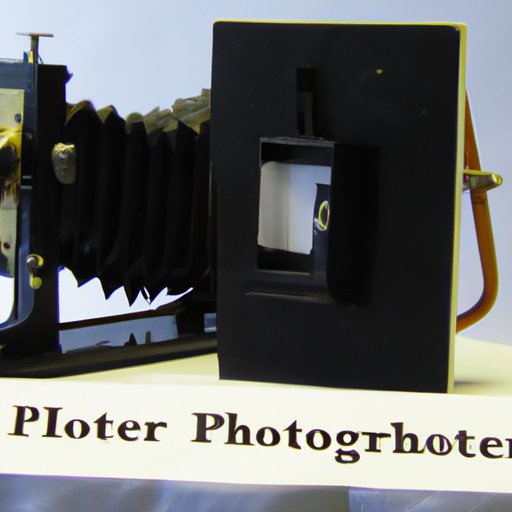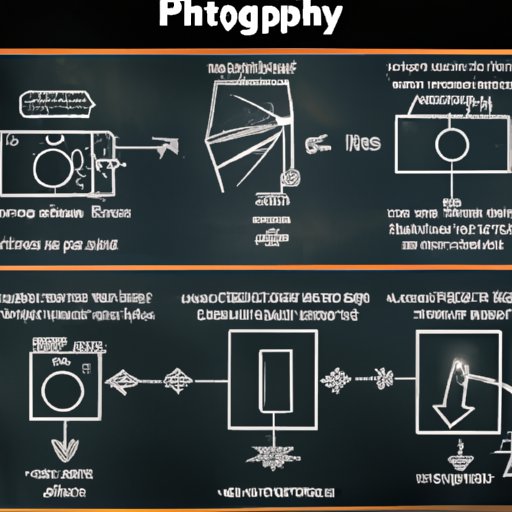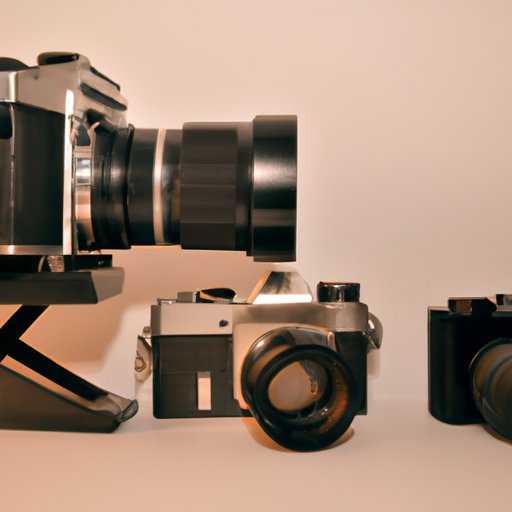Introduction
Photography is the art of capturing a moment in time through light and optics. It has been around since the early 19th century, when inventors first began experimenting with light and optics to create images. Over the years, photography has evolved and become an integral part of our lives, influencing everything from journalism and advertising to popular culture. In this article, we’ll explore the history of photography, the inventors who pioneered it, and its impact on popular culture.
Historical Overview of the Development of Photography
The earliest experiments with light and optics date back to the 16th century, when philosopher and scientist Johannes Kepler developed his theory of the camera obscura. This device was used to project an image onto a wall or surface, creating a temporary “picture”. By the early 1800s, inventors such as Joseph Nicephore Niepce, William Henry Fox Talbot, and Louis Daguerre had begun experimenting with ways to capture these images permanently.
Niepce was the first to successfully create a permanent image using light-sensitive materials. He created the world’s first photograph in 1826, using a process he called “heliography”. This involved coating a pewter plate with bitumen of Judea, a light-sensitive material, and exposing it to light. The resulting image was a faint silhouette of a window in his home.
In 1835, Englishman William Henry Fox Talbot invented the calotype, a new photographic process which used paper coated with silver iodide. This process allowed for the creation of multiple copies of an original image. Talbot’s invention was soon improved upon by French painter Louis Daguerre, who developed the daguerreotype process in 1839. This process used a highly polished sheet of silver-plated copper and exposed it to iodine vapor. When exposed to light, the iodized plate produced a positive image. The daguerreotype process quickly gained popularity, and was used to create some of the earliest photographs of people, places, and events.
The invention of photography had a profound impact on art and society. It allowed for the reproduction of images, making them more accessible to the masses. It also revolutionized the way people viewed the world, providing a new perspective that was not available before.

Exploring the Inventors Who Pioneered Photographic Technology
Joseph Nicephore Niepce was a French inventor who is credited as the pioneer of photography. He was born in 1765 and became interested in lithography in his twenties. His experiments with light-sensitive materials led him to create the world’s first photograph in 1826. Niepce died in 1833, but his work paved the way for future inventors.
Englishman William Henry Fox Talbot was an inventor and mathematician who made significant contributions to the field of photography. In 1835, he developed the calotype process, which used paper coated with silver iodide to create multiple copies of an image. He also developed the photoglyphic engraving process, which allowed for the mass production of prints.
French painter Louis Daguerre was another key figure in the development of photography. In 1839, he created the daguerreotype process, which used a silver-plated copper plate to produce a positive image. This process quickly gained popularity and was used to create some of the earliest photographs.

Technical Breakdown of How Photography Works
At its core, photography is the art of capturing light. In order for a photograph to be created, light must pass through a lens and be focused onto a light-sensitive material. This material, usually film or a digital sensor, captures the light and creates an image. The amount of light, the distance between the subject and the camera, and the type of lens all affect the final image.
Modern cameras are composed of several components, including a lens, a shutter, a viewfinder, and a light-sensitive material. The lens gathers light and focuses it onto the light-sensitive material, while the shutter regulates how much light is let in. The viewfinder allows the photographer to see what they are shooting, while the light-sensitive material captures the light and creates the image.
Once the image is captured, it can then be processed and manipulated. This involves adjusting the exposure, color balance, contrast, and other aspects of the image. Once the image is complete, it can be printed or shared digitally.

Looking at the Evolution of Camera Technology Through Time
The first cameras were large and bulky, and required long exposures in order to capture an image. As technology advanced, cameras became smaller and more portable, allowing photographers to take pictures in different settings. In the late 20th century, digital cameras were introduced, replacing film and allowing for faster and easier photography. Today, digital cameras are the most widely used type of camera, and have revolutionized the way we take and view photographs.
Over the years, cameras have evolved to include new features such as autofocus, automatic exposure, and high-resolution sensors. These features allow photographers to take higher quality photographs, and to capture more detailed images. Additionally, modern cameras are often connected to computers and mobile devices, allowing for easy sharing and editing of photos.
Analyzing the Influence of Photography on Popular Culture
Photography has had a profound impact on popular culture. From news outlets to social media, photographs have become an integral part of the way we communicate. They are used to document events, capture moments, and tell stories. Additionally, photography has become a powerful tool in advertising, allowing companies to showcase their products in a visually appealing way.
Photography has also changed the way we view the world. Through photographs, we are able to see things from a different perspective and gain insight into different cultures. We are able to experience moments that we otherwise wouldn’t be able to, and to connect with people in ways that weren’t possible before.
Conclusion
The invention of photography has revolutionized the way we view the world. From its early beginnings in the 19th century to its current state as a powerful tool in popular culture, photography has come a long way. Its impact on art, society, and culture cannot be understated, and its importance will continue to grow in the years to come.
(Note: Is this article not meeting your expectations? Do you have knowledge or insights to share? Unlock new opportunities and expand your reach by joining our authors team. Click Registration to join us and share your expertise with our readers.)
